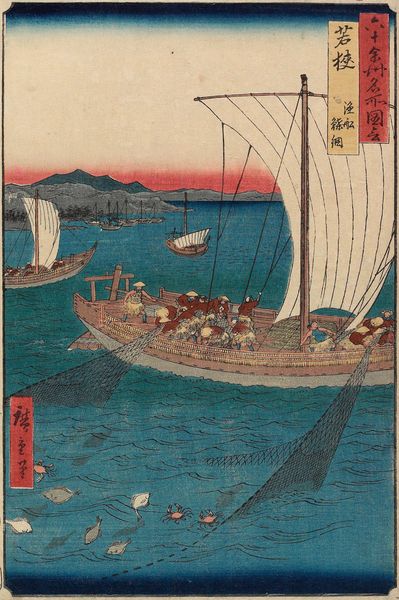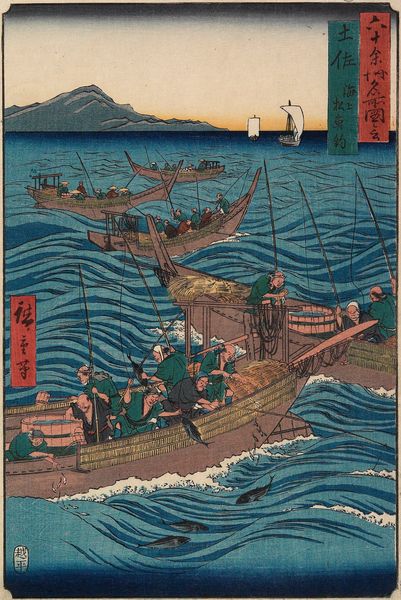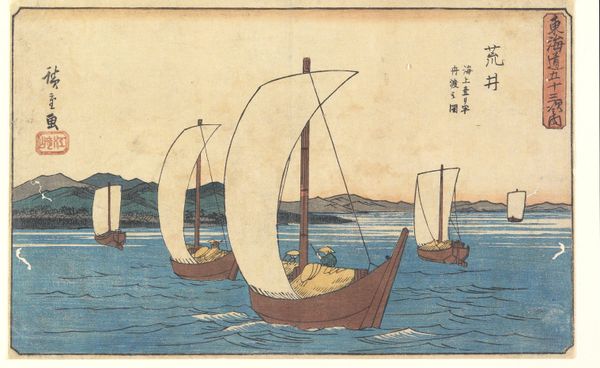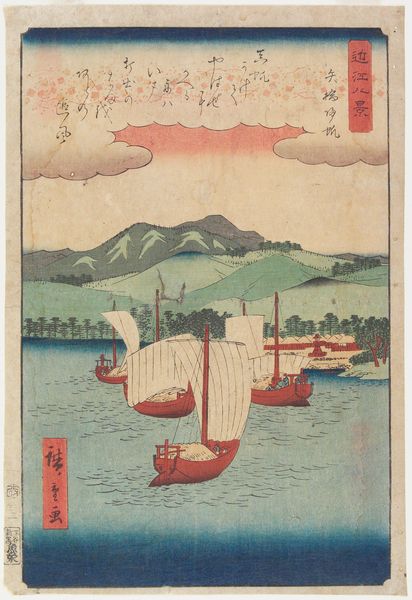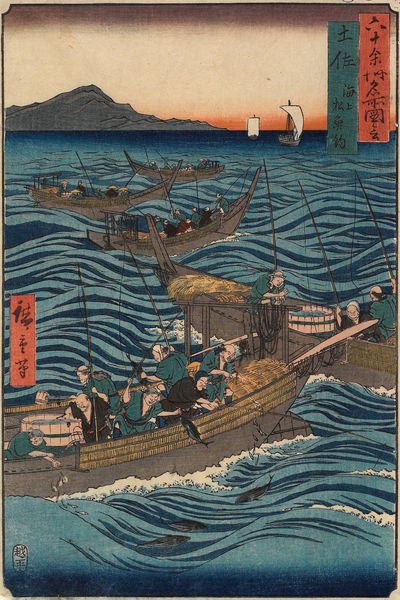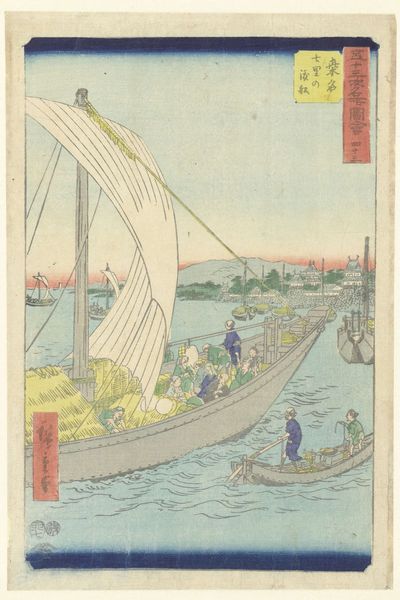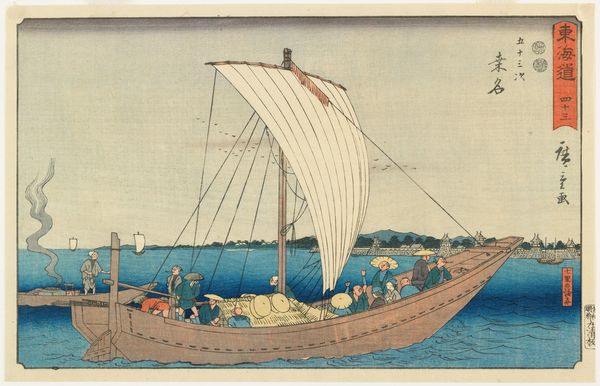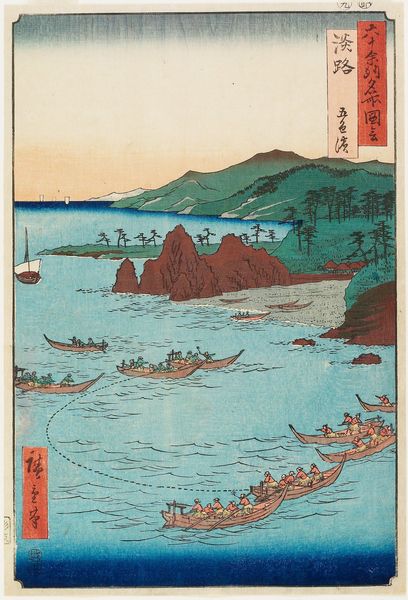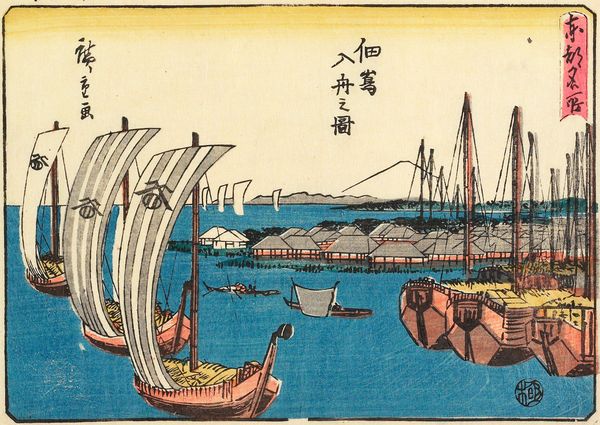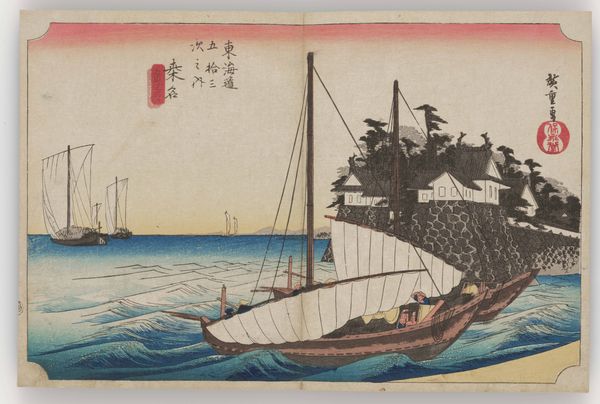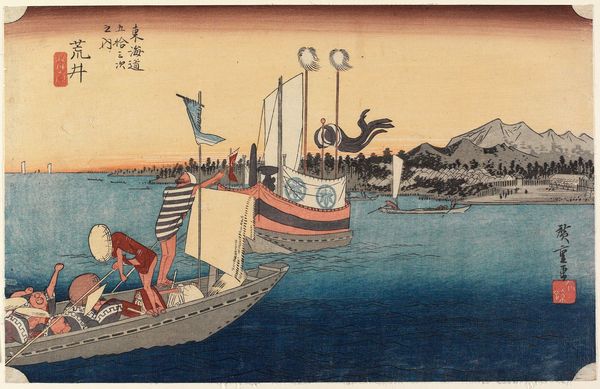
Flatfish Netting and Fish Boats Possibly 1853 - 1859
0:00
0:00
print, watercolor, ink
#
water colours
# print
#
asian-art
#
landscape
#
ukiyo-e
#
watercolor
#
ink
#
genre-painting
Dimensions: 13 7/16 × 9 in. (34.2 × 22.8 cm) (image, vertical ōban)
Copyright: Public Domain
Curator: Here we have Utagawa Hiroshige's print, possibly created between 1853 and 1859, titled "Flatfish Netting and Fish Boats." The location of the print depicts the serene everyday of Japanese fishers. What's your first impression of this work? Editor: The blue of the water immediately grabs my attention, particularly the density and activity toward the bottom of the scene and the texture of the nets themselves. You can feel the weight of the net underwater. Curator: The print belongs to the ukiyo-e tradition, meaning "pictures of the floating world." Hiroshige captured not just a landscape but also a snapshot of life in that time, a reflection of Edo-period Japanese culture. He is very interested in depicting a day by the sea and not some heroic tale or historic event. Editor: Absolutely. Look at the collective labor. The materiality of the print allows us to study its production—the carving of the woodblocks, the application of ink and watercolor—as a physical embodiment of the collective action portrayed in the fishing boats. It underscores how labor and consumption are entwined. Curator: The presence of laborers speaks to hierarchies, and also to class and gender, don’t you think? Fishing in Japanese culture also intersects with Shinto beliefs. This artwork really bridges everyday action with philosophical themes, specifically what concerns identity within community. Editor: Yes. The fishers aren't only catching food; they're part of a cycle of production, contributing to a system where human effort extracts from nature for sustenance. Consider how different materials work together to construct our daily realities. Curator: Right, and Hiroshige uses his art to situate us within that ongoing negotiation. Art can expose us to labor practices we're often alienated from and in this work, it feels like we have an invitation to participate. Editor: Seeing this work does leave me pondering our own relationship with resources. The beauty makes one reflect on the hard work that it portrays. Curator: And the lives of those doing that hard work, then and now. The conversation, I feel, begins there.
Comments
No comments
Be the first to comment and join the conversation on the ultimate creative platform.
